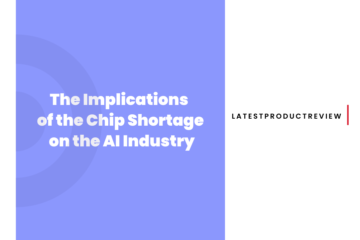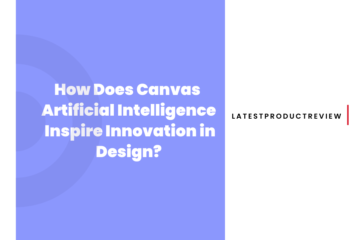Computer vision technology has emerged as a game-changing field with the potential to alter many businesses and enhance many parts of our lives. Computer vision applications have opened up new avenues for automation, efficiency, and creativity by allowing robots to perceive and interpret visual data.
This article will look at 12 amazing computer vision applications that are transforming the world. Computer vision is having a huge influence on everything from healthcare and transportation to shopping and entertainment.
Healthcare Revolution
Disease Early Detection Making Use of Medical Imaging
Computer vision has considerably improved medical imaging by allowing for the early diagnosis of illnesses such as cancer. Algorithms can spot minute patterns and irregularities in medical pictures that human eyes may miss, allowing for faster and more accurate diagnosis.
Surgical Robotics and Assistive Technology
Computer vision is critical in surgical robots, providing accurate direction and real-time input to surgeons. Surgical robots using computer vision systems improve surgical operations, resulting in better outcomes and lower risks for patients.
Computer Vision for Patient Vital Signs Monitoring
Without the use of obtrusive devices, computer vision technology can monitor patients’ vital indicators such as heart rate and breathing. Computer vision systems can enable non-contact monitoring in hospitals and home care settings by analyzing changes in facial expressions, skin colour, and movement.
Enhancing Transportation
Driver Assistance and Autonomous Vehicles
Computer vision is at the heart of self-driving cars, enabling them to monitor their surroundings and make decisions in real-time. Furthermore, computer vision-based driving assistance systems increase safety by detecting potential hazards and alerting drivers to them.
Traffic Management and Monitoring
Computer vision-based traffic monitoring systems can monitor traffic flow, detect congestion, and optimise traffic management methods by analysing real-time video inputs from cameras. This technology improves transportation networks and reduces congestion.
Computer Vision for Pedestrian and Cyclist Safety
Computer vision algorithms can recognise and track pedestrians and cyclists, improving urban safety. Computer vision reduces accidents and saves lives by alerting drivers to the presence of vulnerable road users and allowing collision avoidance systems.
Revolutionizing Retail
Automated Inventory Management and Smart Checkout Systems
Cashier-less checkout systems are made possible by computer vision, in which cameras and sensors track things and automatically bill consumers as they leave the store. This technology boosts productivity, shortens lines, and lowers pilfer incidences.
Personalized Shopping Experiences with Virtual Try-On
Computer vision enables shoppers to virtually try on apparel and accessories, greatly improving the online shopping experience. Customers may examine how things appear and fit before purchasing by superimposing digital representations onto live video streams.
Shoplifting Detection and Loss Prevention
In retail situations, computer vision-based systems may identify suspect behaviours such as stealing. Security workers may be warned to prospective thefts by analysing video feeds in real time, increasing loss prevention efforts.
Advancements in Agriculture
Crop Yield Prediction and Monitoring
By analysing photos acquired by drones or ground-based cameras, farmers may monitor crop health, diagnose illnesses, and anticipate harvests. Precision agriculture is made easier by this technology, which optimises resource allocation and increases production.
Monitoring and evaluation of livestock health
Video feeds may be analysed by computer vision systems to monitor cattle behaviour, identify indicators of disease or distress, and measure general health. Farmers may take immediate action to avoid disease spread and minimise economic losses by offering early identification of health concerns.
Precision Farming Weed and Pest Identification
Computer vision algorithms can distinguish between crops and weeds, allowing for targeted weed management. Furthermore, computer vision can identify and monitor pests, allowing farmers to execute accurate pest management tactics while minimising the use of pesticides.
Improving Manufacturing Processes
Production Line Quality Control and Defect Detection
Computer vision systems can examine items for flaws on manufacturing lines, maintaining high-quality standards and lowering the possibility of defective products reaching the market. This technology increases productivity, decreases waste, and boosts customer happiness.
Assembly Line Optimisation with Robotic Automation
Robots can navigate complicated settings, handle delicate objects, and conduct difficult duties on assembly lines thanks to computer vision. Manufacturing processes become faster, more precise, and more cost-effective when computer vision and robotic automation are combined.
Assembly and Maintenance Tasks Using Augmented Reality
When integrated with augmented reality (AR), computer vision offers real-time advice and overlays digital information on actual things. This technology assists employees with assembly, maintenance, and repair jobs, boosting efficiency while decreasing mistakes.
Making Cities Smarter
Intelligent Surveillance and Public Safety
Surveillance systems based on computer vision can analyse video feeds to detect suspicious activity and offer early warnings of possible security hazards. This technology improves public safety and allows for faster reactions to situations.
Congestion Control and Traffic Flow Optimisation
To promote smoother traffic flow, computer vision systems can monitor traffic patterns, detect congestion, and optimise signal timings. Cities become more efficient and ecologically friendly by lowering commute times and congestion.
Pollution Control and Environmental Monitoring
Computer vision image and video analysis might be used to monitor environmental elements such as air quality, water pollution, and wildlife habitats. This data can help governments and groups make good decisions regarding environmental conservation and long-term development.
Assisting the Visually Impaired
Object Recognition and Scene Interpretation
Computer vision technologies enable machines to recognise things and comprehend situations, therefore delivering important information to the visually handicapped. These systems improve independence and navigation by characterising their environment.
Obstacle Detection and Navigation Aids
Computer vision-based navigation devices can identify obstructions in real time, allowing visually impaired people to move more securely. Wearable gadgets or integration with assistive technology such as canes or cellphones may be used in these systems.
Conversion of Text to Speech for Reading Assistance
Computer vision can translate printed text into audible voice, making it possible for visually challenged people to read books, papers, and other written things. Computer vision bridges the information gap for those with visual impairments by giving access to information.
Transforming Entertainment
Gesture Recognition in Interactive Gaming Environments
Gesture recognition in computer vision allows users to engage with games and virtual worlds using natural hand gestures. This device improves immersion in games while also encouraging physical exercise.
Applications for Virtual Reality (VR) and Augmented Reality (AR)
Computer vision is a critical component of VR and AR technology, allowing virtual items to be integrated into the real environment and producing immersive experiences. VR and AR have enormous promise in fields ranging from gaming and education to training and design.
Emotion-Driven Content Facial Expression Analysis
Computer vision algorithms can grasp emotions by analysing face expressions, providing personalised and responsive content. This technology improves interactive experiences in industries including advertising, entertainment, and healthcare.
Enabling Environmental Conservation
Wildlife Conservation and Monitoring
Computer vision systems can identify and monitor animal species by analysing camera trap photos, which helps conservation efforts. Researchers can collect vital data for habitat protection and animal preservation by automating the identification procedure.
Detecting Illegal Activity
By analysing satellite photos or drone footage, computer vision may aid in the detection of illicit activities such as poaching and deforestation. This technique aids in early identification, allowing for prompt intervention and the preservation of natural resources.
Image Analysis for Climate Change Impact Analysis
Satellite photos may be analysed by computer vision algorithms to track changes in land cover, ice caps, and other environmental characteristics. This information contributes to scientific study and policymaking by providing useful insights into the effects of climate change.
Enhancing Accessibility
Recognition and Translation of Sign Language
Computer vision technology can understand sign language motions and transform them into spoken or written language, allowing deaf or hard-of-hearing people to communicate effectively with others who are not.
Lip-Reading Technology to Enhance Communication
Individuals with hearing difficulties can benefit from computer vision algorithms that analyse lip movements and translate them into comprehensible speech. This technology promotes diversity and improves engagement.
Detecting Objects and Assisting People with Disabilities
Computer vision systems can identify and recognise items in their surroundings, supporting people with impairments in their daily activities. These technologies enhance independence and increase the quality of life by giving real-time guidance and help.
Future of Computer Vision
Potential Innovations and Applications
Advances in deep learning techniques, better processing speeds, and more powerful hardware all bode well for the future of computer vision. This will lead to increasingly more complex applications in a variety of sectors, influencing the society we live in.
Ethical Issues and Privacy Concerns
As computer vision technology becomes more widely used, ethical issues and privacy concerns must be addressed. Responsible development and use are essential to ensure that these apps serve society while not jeopardising privacy or causing prejudices.
Collaboration with Others for a Greater Impact
To maximise the effect of computer vision applications, computer vision engineers must interact with specialists in domains such as medical, transportation, and environmental science. Innovative solutions may be developed by combining knowledge and skills.
Conclusion
The disruptive impact of computer vision applications may be seen in a variety of industries, including healthcare, transportation, retail, agriculture, and manufacturing. Computer vision is transforming the world for the better, from early illness diagnosis to driverless cars to personalized shopping experiences and wildlife protection. As technology advances, it is critical to invest in R&D, address ethical problems, and cultivate partnerships in order to realise the full potential of computer vision and build a future with even more remarkable uses.





